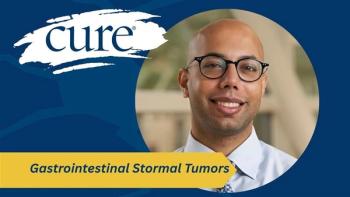
Screening, Prehab May Reduce Breast Cancer Survivorship Burden
Key Takeaways
- Prehabilitation and baseline assessments improve resilience, recovery, and identify lymphedema risk in breast cancer patients.
- Bioimpedance spectroscopy (BIS) detects subtle fluid changes, enabling early intervention and guiding survivorship care.
Prehabilitation and early screening, including BIS, can ease recovery, reduce side effects and help manage lymphedema after breast cancer treatment.
Prehabilitation and baseline physiological assessments before breast cancer surgery and treatment may enhance resilience to side effects, improve recovery and identify patients at an increased risk for developing lymphedema — a chronic and often debilitating condition that causes swelling in the affected arm and can arise weeks, months or even years after cancer intervention. What if there was a simple way to minimize the effects of lymphedema that up to 80% of patients are at risk for?
You are already a champion for the best possible treatment outcomes for your patients with breast cancer. One option is a non-invasive baseline assessment using bioimpedance spectroscopy (BIS). This technology can detect subtle increases in extracellular fluid in the arm — changes that would otherwise be imperceptible — enabling earlier intervention. BIS also provides valuable data on body composition, including total body water, extracellular and intracellular fluid volumes, skeletal muscle mass, and fat mass, all of which are important for guiding survivorship care.
Prospective Surveillance
There is growing recognition of the value of integrating physical therapy across the continuum of comprehensive cancer care. As experts describe it, the approach represents a pragmatic, barrier-free, patient-centric, data-driven model to making rehabilitation a standard strategy. You also can predict how long it takes to monitor your patients for adverse effects, which can vary depending on the individual and the intervention. For example, research on using a Prospective Surveillance Model (PSM) of care for breast cancer related lymphedema has demonstrated that we know what time frames we should continue to monitor and evidence so far suggests we should survey patients for at least five years.
Assessing a patient’s baseline function can predict the severity of treatment-related impairments and inform survivorship care planning. Prehabilitation care can prevent treatment-related pain, loss of function and declines in quality of life. A prospective surveillance program aims to minimize risk of several common treatment-related complications including fatigue, pain, lymphedema, weight gain, chemotherapy-induced peripheral neuropathy, cardiotoxic effects of chemotherapy and radiotherapy, bone health challenges and joint pain.
Check Early, Check Often
People about to undergo breast cancer treatment are often overwhelmed with information, stress, and immediate concerns about survival. Their primary focus is on beating the cancer — not necessarily on what comes after. Therefore, best practices call for ongoing education, rehabilitation support and regular screening throughout the continuum of care.
Guidelines from National Comprehensive Cancer Network (NCCN) and the National Accreditation Program for Breast Centers (NAPBC) emphasize comprehensive breast cancer survivorship care. They call for creating individualized survivorship care plans, multidisciplinary collaboration, regular monitoring for treatment-related effects like lymphedema, psychosocial support, and lifestyle recommendations. BIS has gained formal recognition as a valuable tool in this process, with both NCCN and NAPBC guidelines endorsing it as an evidence-based method for lymphedema management.
Early intervention — such as compression therapy, skin care, exercise, and patient education — can significantly reduce the severity of lymphedema. Patients at higher risk, particularly those who have had multiple lymph nodes removed, should be closely monitored for signs of developing symptoms. That said, even those considered lower risk are not immune. Early-stage lymphedema (stages 0 and 1) is often reversible with prompt treatment, whereas later stages (2 and 3) are typically more difficult to manage and less responsive to treatment. This underscores the importance of proactive screening for all.
This doesn’t mean there are no barriers to overcome. While rehabilitation and exercise have been shown to help prevent or manage many of the physical side effects of breast cancer treatment, implementation remains inconsistent. Few women are referred for rehabilitation during or after treatment, despite its proven benefits. Multiple barriers contribute to this gap, most notably the lack of referrals and low patient awareness. The National Standards for Cancer Survivorship Care can guide development of innovative programs or services to assess alignment and enhance existing survivorship programs. This system-wide strategy can improve the precision of your risk-stratification and predictive models.
Financial Considerations
In addition, the financial aspect cannot be overlooked. As awareness, monitoring, and treatment of lymphedema continue to expand, there is an increasing need for insurers to recognize and address the associated costs. Out-of-pocket expenses and other financial burdens faced by patients must be thoroughly understood to inform policy decisions.
Perception does not always align with reality when it comes to cost. Healthcare leaders may view prehabilitation and early surveillance as upfront expenses, without fully accounting for the long-term savings associated with early risk identification. One study comparing prospective surveillance to traditional intervention, for example, estimated the direct costs of implementing the PSM at $636 in the first year — compared to long-term costs of $3,125 when treatment is delayed to the point of impairment-based intervention. Direct costs include a treatment visit with a physical therapist and the cost of durable medical equipment associated with condition treatment and management.
An earlier study demonstrated successful management of breast cancer-related lymphedema using a conservative compression intervention using a PSM approach. This approach utilized only minimal physical therapy and durable medical equipment resources for early-stage lymphedema management and has been shown to be clinically effective. A large part of the cost difference is in the time and intensity of treatment needed when lymphedema is more advanced and requires complete decongestive therapy along with the expense of the custom versus ready to wear garments. The cost is about a 4 to 1 ratio - a custom garment is at least four times more expensive.
As the number of breast cancer survivors continues to grow, so too does the need for care models that anticipate long-term challenges and intervene early. Comprehensive prehabilitation and screening strategies — especially when supported by tools like BIS and the Prospective Surveillance Model — may help patients feel informed, prepared and empowered. At a time when they may feel most vulnerable, this approach puts control back in their hands. It is time to elevate prehabilitation and proactive monitoring from ‘nice to have’ to standard practice in survivorship care.
For more news on cancer updates, research and education,





